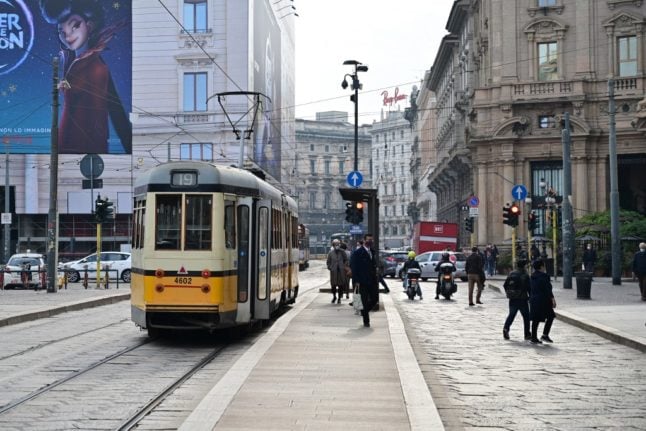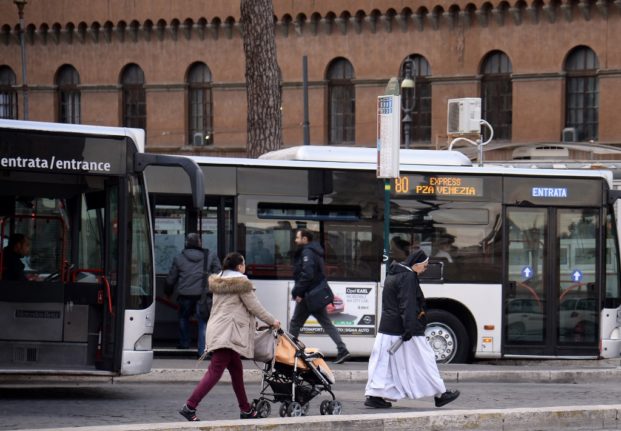Question: My family are spending the holidays in Italy, and we’re wondering what sort of public transport services will be in place. I know we should expect a reduced timetable, but will some services still be up and running?
At any time of year, the quality and frequency of public transport services in Italy varies significantly between rural and urban areas, as well as between cities.
Areas that are usually poorly served by just the occasional bus could have an even more reduced service over the holidays – and you may well not be able to find out the revised schedule in advance.
That said, parts of the country that already have relatively robust public transport networks tend to keep them fairly active over the Christmas period.
Even on Christmas day itself, you’ll find the tens of high speed and regional trains that provide daily connections between major Italian cities and small towns running pretty much on a standard timetable.

Local public transport services are somewhat reduced, but don’t shut down entirely, as they do in some parts of the world.
In Rome, all bus, tram and metro services should run as normal on Christmas Eve until 9pm, with some services running at a higher frequency than normal during the day. Night buses will kick in from 11.30pm.
Public transport services should run from 8:30am-1pm and 4.30pm-9pm on Christmas day, apart from the Termini-Centocelle train line, which is only scheduled to run in the morning and should be replaced by the 105 bus in the afternoon.
On New Year’s Eve, most buses and trams are scheduled to run until 9pm and the metro until 2.30am, with a few buses running until 2.30am. The night buses NMA, NMB, NMB1 and NMC should run along metro line routes from 2.30am until 8am on January 1st.
READ ALSO: How to make the most of a Christmas break in Rome
In Naples, bus, metro and funicular services should run until around 1.30pm on December 25th and January 1st, reopening from 4-11.30pm.
The same services are currently due to end around 8pm on Christmas Eve and New Year’s Eve.
Venice public transport operator ACTV has released a detailed timetable of services for Christmas Day, New Year’s Eve and New Year’s Day.
While Italy has been hit with a series of transport strikes over the past few months, there’s not much chance of major strike action being announced over Christmas.
That’s because Italian law bans unions from organising strikes which could impact the air travel sector – so general strikes and transport sector strikes are out – on certain busy travel dates (known as periodi di franchigia, or ‘exemption periods’). These include December 18th to January 7th, as well as much of August.
Some cities haven’t yet released their holiday timetables, but previous years give an indication of what you can expect.
In Milan last year, services were operational from 7am-7.30pm on Christmas day, with night buses cancelled.
On Christmas Eve, New Year’s Eve and New Year’s Day, services operated on a Saturday timetable, with night buses running as normal.

Bus services in Florence last year ran on a reduced holiday schedule until 1pm on Christmas day and until 8pm on New Year’s Eve, apart from the 6, 11, 14, 17 and 23 lines, which ran on limited routes until 2.30am on the night of the 31st-1st.
The city’s trams ran until 2.30am on the night of New Year’s Eve.
If you’re in Rome over the Christmas period this year, you’re in luck: the city council has renewed its initiative offering free public transport days for the month of December.
On December 24th, all public transport around the city will be free.
And until January 8th, three bus lines providing shuttle services from the Termini and Ostiense train stations to the centre – FREE 1, FREE 2, and the 100 service – will also be free.
The move is part of an ongoing scheme by mayor Roberto Gualtieri to reduce traffic in the city centre over the busiest parts of the season.



 Please whitelist us to continue reading.
Please whitelist us to continue reading.
Member comments